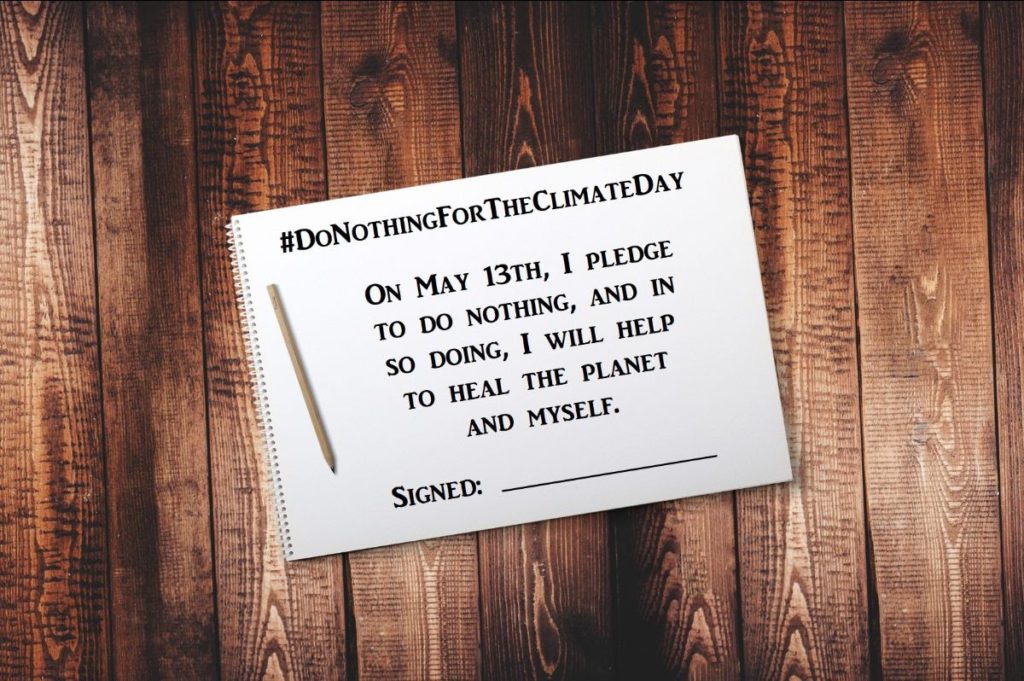How much do you know about the radioactive history of the radium industry? I recently watched the Radium Girls on Netflix, which reminded me of the brutal abuses suffered by radium workers (often women). Radium Girls were the young women who painted luminous watch faces with radium paint and were taught by their supervisors to shape the brushes with their lips to keep their work precise. Of course, they got radium poisoning, their bones (where radium concentrates) turning cancerous or crumbling in their bodies — including pieces of their jaws literally falling out.
The story focuses on two sisters and two other Radium Girls who sued the United States Radium Corporation for damages. No need to tell the whole story, as it’s worth watching, but there are a few points that are relevant today.

First, as one watches the film, one can’t help scream to the girls, “Stop licking your brushes!” knowing how dumb it is. But then again, how many dumb things would people yell at you for doing? And did you even know that they were dumb? Sure some are obvious like smoking or vaping but what about flossing? In thirty years, our kids will be watching Glide Guys about how the Proctor & Gamble Company coated their Glide floss with PFAS chemicals (Teflon-like chemicals)—substances industry has known to be toxic since 1978! And yet, how many people today, even though they might have given up their Teflon pans, know they’re injecting similar toxic chemicals straight into their bloodstreams each time they do the good deed of flossing their teeth? “Stop flossing!” viewers will yell, and shake their heads at how stupid we were.*
Second, one of the sisters, Bessie, who fortunately didn’t lick her brush because she didn’t like the aftertaste, decides at first to find a new job, and tells this to her boyfriend, a labor activist. He then says, “Well, you know, don’t apply to the fireworks factory. Or the hattery. Or the shoe factory, or the canning plant,” because they’ll all expose you to “chronic toxins.” This was a nice shorthand way to show how abusive so many industries and corporations were (at the time). I put at the time in parentheses as I’m not sure really that much has changed.
In fact, that’s the point I want to make. Toward the end of the film, Bessie asks Katherine Wiley of the New Jersey Consumer’s League, “So this is how it ends?” And Wiley, who had helped orchestrate the Radium Girls case, responds, “Can I tell you a secret I learned a long time ago? It never ends.” And with those three words conveys that the abuses will keep on and on, but so will the efforts to fight them. But as this and countless other movies show, the corporations, with their nearly infinite resources (relative to the poor workers), their ability to pay off experts, to hide data, to utilize strongmen (including the police), to settle with (and thus silence) plaintiffs means they’ll just keep on winning. Sad fact: radium kept being used in watches until the 1970s even as the dangers of radium were known before the first Radium Girls started dying in the 1920s.**

Diving deeper
But why is the struggle never ending? I would argue that it’s because we’re not attacking the insane economic system that allows for, and rewards, corporations that actively abuse people and the Earth. Now that’s not a new thesis. In fact I’m yawning as I write it. Back in the 1970s, Arne Naess criticized the environmental movement for that very failing. Instead of fighting in ‘shallow’ ways—saving one forest, preventing one power plant or incinerator from being built—Naess argued we need instead to cultivate a radical new relationship with the Earth and ourselves. He called this “Deep Ecology.”
But the majority of activists still haven’t internalized this. Indeed, if the Green New Deal succeeds, it would keep the same destructive underlying system in place,*** only replacing our fossil fuel infrastructure with a mineral-based infrastructure (that is to say, our world would run on silicon PVs and lithium batteries, and wind turbines crafted primarily from iron ore). And mining, of course, is devastating to the Earth, and to workers—both those mining the materials as well as manufacturing them into batteries, PV cells, and so on.
Searching for information on the abuses of the lithium economy, it was hard to find much. Most stories were framed like this Salon article, titled “Electric cars are still better for the environment. But lithium mining has some problems,” arguing the equivalent of ‘sure Radium Girls may die, but now I can tell time at night.’ And of the articles I did find, the majority focused on the localized effects of lithium mining. It took a lot to find anything written on the health effects of working with lithium, and what I found was from forty years ago!

Just like in Radium Girls (or the great film Dark Waters, exploring DuPont’s cover-up of PFOA), the industry knew of the dangers longer than the public did, and yet they marched on, pursuing profit and calling it progress. But true progress is reining in our consumption and population and degrowing our way, quick as we can, to get back within Earth’s limits.
The Green New Deal is not that.**** In fact, it should be called Mining’s New Deal or even the Gray New Deal, as its success will simply shift our exploitation from the atmosphere to the geosphere, and end up leaving ever greater portions of Earth’s crust transformed into devastated wastelands.***** And many corporations (including those perpetuating abuses today) will profit in all sorts of new ways. This past week, I joined the “Blue Innovation Symposium” to hear about the innovative technologies being developed to help the world’s oceans. Some were really cool, like an Autonomous Unmanned Vehicle that can sow new coral spawn on dying corals to help them regrow. But most of the presentations focused on naval applications—not surprising as one of the sponsors was the defense contractor BAE. (Fun fact: the U.S. Radium Corporation was also a defense contractor.)
But it doesn’t have to be this way.
Instead of destroying the Earth and workers in new ways, we could instead go in a bold new economic direction—one that values sufficiency rather than accumulation, that pays people to help heal the Earth, that guarantees a decent job to any who wants one. This past week, I also had the great pleasure of having Kim Stanley Robinson join our Gaian Book Club discussion of The Ministry for the Future.****** In The Ministry, Robinson explored dozens of nested strategies to solve the climate crisis and create a sane human socioeconomic system, rather than runaway climate change and a great die off, which is where we’re currently headed. (As Robinson noted during the discussion, the bar for utopian novels has been lowered dramatically: just avoiding the mass extinction event is utopian at this point!) I won’t go into all the great ideas he outlines in The Ministry but here are three:
First, Robinson describes the creation of a “Carbon Coin,” a new fiat currency that, unlike Bitcoin, wouldn’t be created by wasteful “mining” (solving computational puzzles) but when carbon is sequestered in a verifiable way—whether that’s enriching soil, planting trees, or even choosing to permanently leave one’s oil reserves in the ground. This means people can make a livelihood healing ecosystems rather than extracting resources from them. Second, in the world he creates, governments limit how much wealth people can have. And third, governments offer decent jobs to all who want one (as an employer of last resort) meaning people no longer choose to work in unsafe or underpaid jobs—an economic floor that means companies have to do much better for the Earth and for their workers if they want to attract and hold onto employees.

I’m not saying renewables won’t be part of the mix. They’ll have to be. But we’ll need to make do with a lot less energy. And ideally that energy will power small super energy-efficient homes, schools and hospitals, and yardfarms and local markets, instead of warships, Bitcoin mining operations, and electric car charging stations. In other words, a saner, slower, smaller-scale economy focused on providing for our needs (rather than our ever-expanding desires) and on healing the planet.
Hard to imagine getting from A to B when pretty much everyone is fighting for A—even environmentalists. But then the fighting will never end, well, at least until everything ends, which if we don’t reinvent ourselves and our economy ASAP, may come sooner than we think.
Go with Gaia,
Erik
—
Special thanks this week to John Mulrow and to Kim Stanley Robinson in helping to inspire and shape this essay!

Endnotes
*Obviously, you shouldn’t really stop flossing, as it’s good for your gums and oral health. But you should immediately stop using brands of floss coated in toxic chemicals.
**And not even billionaires are immune to the lies of corporations. Another major product being sold in the 1920s was Radithor—literally water with radium dissolved in it! One billionaire industrialist, Eben Byers, drank so much Radithor that he died of “multiple radiation-induced cancers.” (And you thought the microplastic floating in bottled water today is bad! It’s not Radithor, but all the same, future humans will yell “Stop drinking it!” at the screen-version of you decades from now.)
***I.e. corporate capitalism complemented by a culture of consumerism.
****At least as it is currently formulated: focused on growth, especially in the renewable energy and transportation sectors. The aspects focused on job creation, family and medical leave, and just wages are good, they just need to focus on the industries of nature restoration and small-scale sustainable agriculture and making towns and cities human-scaled rather than car-dependent—which are requirements of all truly sustainable economies.
*****Special thanks to John Mulrow for helping me understand that the renewable energy economy is essentially substituting minerals for fossil fuels and the pollution of the geosphere for the atmosphere.
******And special thanks as well to Kim Stanley Robinson for finding time to discuss The Ministry for the Future with us.

What We’re Reading
- “Avoiding a ‘Ghastly Future’: Hard Truths on the State of the Planet.” This Yale e360 article by Carl Safina discusses the recent research on the threat of converging environmental crises.
- The latest issue of Mother Pelican is out, grappling with economic growth, population, hierarchy and more.
- “We Live in Disastrous Times. Why Can’t Disaster Movies Evolve?” This New York Times essay explores why disaster movies can’t be more nuanced—imagining a slow collapse rather than a fast collapse (e.g. zombies, a pandemic that kills everyone, etc.). Perhaps, as the author notes, it’s because we’d then have to deal with all the real problems (like providing for everyone’s basic needs) that are leading us there.
This essay was originally published at gaianism.org and is republished with permission from the author.